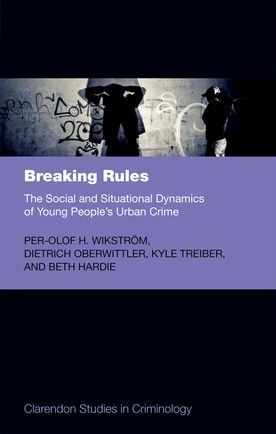We are now closed for the Christmas and New Year period, returning on Monday 5th January 2026. Orders placed during this time will be processed upon our return on 5th January.

Breaking new ground in the study of crime in urban environments, The Social Dynamics of Urban Crime examines the findings, theoretical basis, and new methodology of The Peterborough Adolescent and Young Adult Development Study (PADS+).
This major longitudinal study investigates the role of the social environment on crime causation, involving a cohort of 700 young people from the age of 12. A particular aim of PADS+ is to employ a new theory, known as Situational Action Theory, as well as the innovative methodology of ecometrics combined with space-time budgets to improve the study of young people's offending and its changes.
By reviewing the current literature and analysing the theoretical and methodological problems of previous research, the book explains how Situational Action Theory can help overcome central problems in criminological theorising. Using this new and innovative framework, it presents an analysis of the urban structure of Peterborough and its correlation to the differences in social life found in that area.
The variations in the urban environment are examined in terms of crime, victimization and fear of crime, and a detailed examination of young persons' crime and its spatial patterns is offered through the unique space-time budget data collected within PADS+ that enables analyses of young people, their movements and crime involvement.
With implications for policy and prevention, as well as being the first study of its kind, this book should be of great interest to policy-makers and practitioners interested in issues of urban environments, as well as those studying crime in the urban environment and the role of the social environment in crime causation.